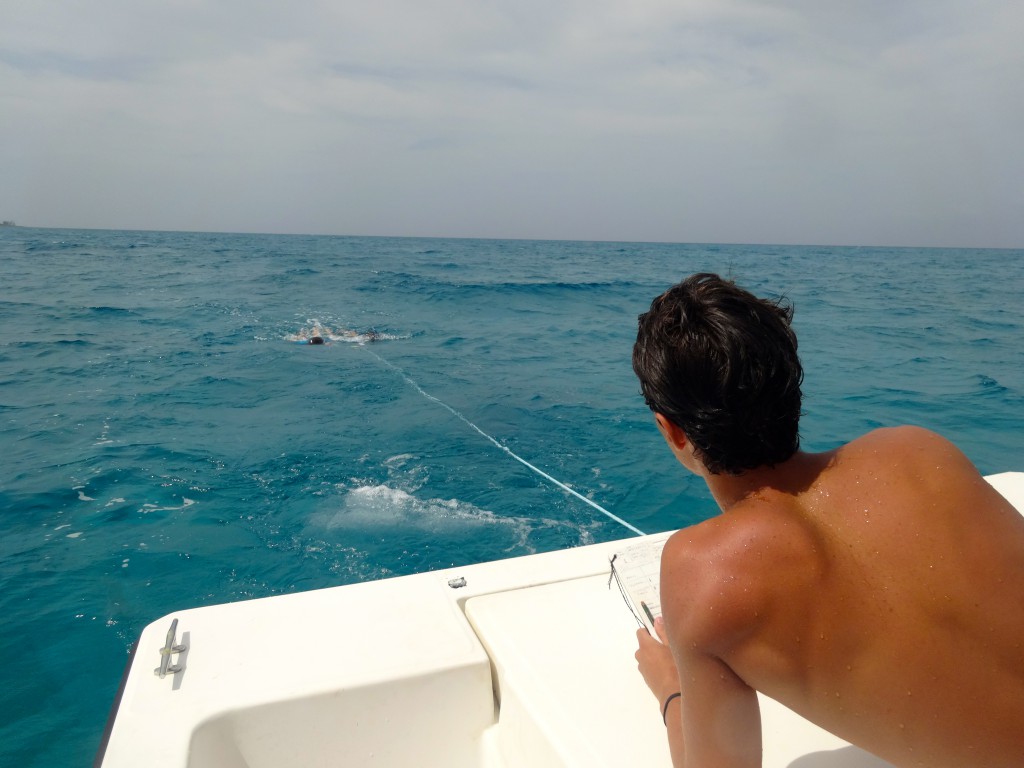Queen conch are an important animal in The Bahamas, both economically and ecologically. Conch reproduce via internal fertilization and females lay extensive egg masses that hold hundreds of thousands of eggs. However, recent years have shown a marked decrease in conch populations, in the greater Caribbean region, and in The Bahamas.

In 1993, dive and tow surveys were conducted that assessed the breeding populations of conch off Cape Eleuthera. This summer we are reinvestigating this area to determine whether conch are still utilizing the same breeding grounds as they did in the 90s, and if their population is undergoing any variation or decline.
To accomplish this, CEI is running a series of conch tows and dives to assess conch population density. This involves either pulling researchers behind a boat or diving in small groups and noting how many conch are present as well as the size category of those conch (either adult, subadult, or juvenile). These size categories have to do with the age and sexual maturity of the conch and are determined by the presence and thickness of a flared lip on the conch’s shell. We will continue to update you on our findings throughout the summer.